How to reach here:
By Air: Imphal airport is at a distance of 8 km from the city center. This airport is well-connected to the places like Kolkata, Delhi and Guwahati.
By Rail: Imphal doesn't have its own railway station and the nearest rail-head to Imphal is the Dimapur railway station which is located at a distance of 215 km and is near Manipur.
Best time to visit: September to April.
Languages spoken: Manipuri, English, Hindi.
Must eat: Eromba, Umorok, Singju.
Famous Restaurants: Fresh Point, Cafe Rita.
Places you must visit:
INA Memorial was used as the unofficial headquarters for the Indian National Army during the British rule. This memorial was constructed in order to honor the soldiers who sacrificed their lives for the nation. The soldiers who died in Moirang are also buried here.Kadam Kadam Badhaye Jaa… was how Netaji Subhash Chandra Bose motivated his young army of men and women possessed by the idea of total freedom to the motherland from the clutches of British. The Army without any backing from any major World armies, trained itself and fought many eventful battles with honor and even came out victorious. This is the place where Netaji raised his army’s flag, buried many bodies and then renamed this place as INA Memorial.


The Kangla Fort is situated along the banks of the Imphal River in the city of Imphal and is also called the Palace of Kangla. The word Kangla belongs to an ancient language Meitei, which means ‘dry land’. In ancient times, this fort was the royal palace of King Pakhangba and is a structure of political and religious significance.During 1632, after acquiring Chinese labourers from the war, brick walls were constructed around the fort. Until 2003, this fort was under the control of Assam Rifles after which it was open for public viewing. This fort houses many significant historical and archaeological remains, which have made this site the Fortress of Manipur.


khongjom is the place where the last warriors of the Manipur Empire breathed their last, fighting a gallant battle to repel the strong British Army columns after the British Govt. had declared war against Manipur on 31st of March 1891. British won the Battle and beheaded General Paona on 23rd April.

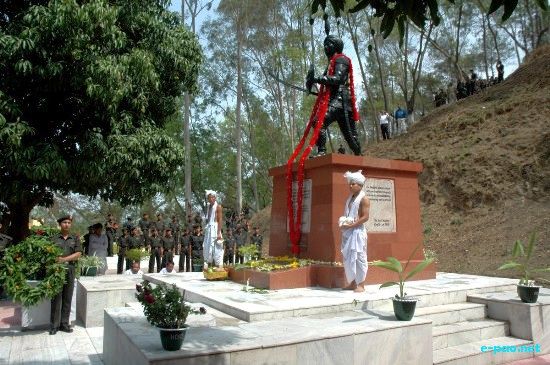
Langthabal provides an insight into the glorious history of Imphal. Standing tall on a hill Langthabal revels in the glory provided by the aura of the relics of the historical palace, traditional dwellings and architecturally complex and accomplished temples of importance. The place is set within the corridor created due to symmetric jack-fruit and pine plantations. The Langthabal surroundings are pristine and the historically important monuments are being preserved well by the archaeology department. The hill housing Langthabal overlooks the Manipur University campus and presents a mesmerizing view of the surroundings.


The Manipur State Museum was set up in 1969 and was inaugurated on 23rd September by Smt. Indira Gandhi, the late Prime Minister of India. At present, the museum has many galleries of Ethnology, Archaeology, Natural History, Painting and Jallan. This museum houses many paintings of Manipuri rulers along with items such as costumes, arms and weapons, relics and historical artefacts. Hiyang Hiren, an ancient 78 ft long royal boat can also be seen in the open air gallery of the museum. The museum showcases a collection of articles of the former Ningthourels of Manipur.

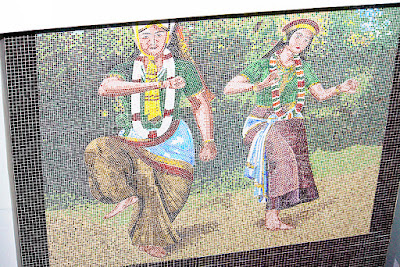
Moirang is famous for its history as well as cultural festivals. It is a small village from where the great freedom fighter, Netaji Subhash Chandra Bose started his struggle and hoisted the flag on 14th April, 1944.This small village is also famous for the Meitei folk culture and celebrates many festivals like Moirang Haraoba festival in the month of May. The festival includes the poised Khamba-Thoibi dance, which depicts the Manipuri folk culture. Moirang also has a museum of the Indian National Army, where a bronze statue of Netaji Subhash Chandra Bose along with various artefacts like badges, articles and letters can be seen.

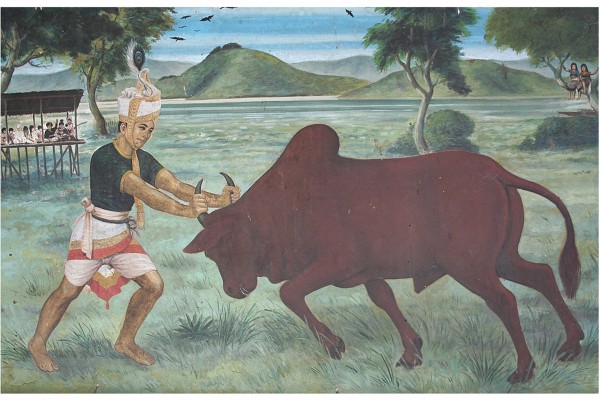
Shaheed Minar is a memorial dedicated to Yubaraj Bir Tikendrajit and General Thangal who were hung in public by British in 1891. At the top of the minaret are three mythological dragons. The Bir Tikendrajit Park, which is an excellent spot to spend a relaxing evening with family and friends was carved out of the east segment of the polo ground, and is named after Tikendrajit, who revolted against the British.This lofty Minaret at Bir Tikendtrajit Park in the center of the city reminds passers by of the sacrifices of those great men.
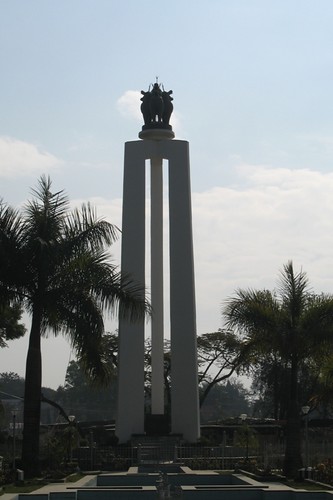
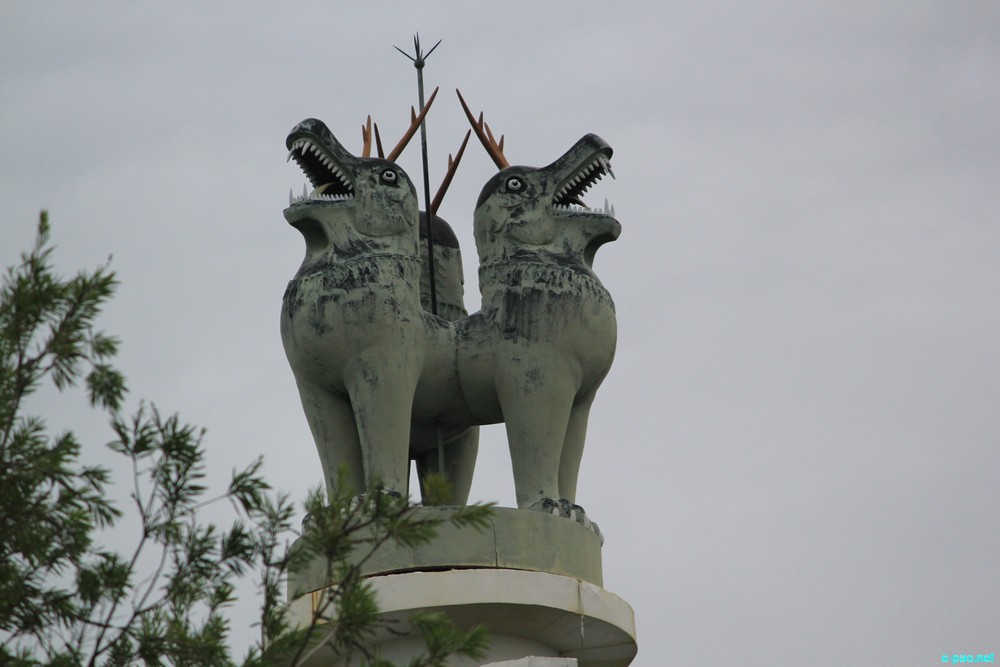
The city of Imphal has a distinct history of being the land of war and over the years, it has experienced many hostilities and confrontations. The War Cemeteries are a living proof of those brutalities.The War Cemeteries managed by the Commonwealth War Graves Commission is an attempt to commemorate the reminiscences of those British and Indian soldiers who succumbed during the combat during the Second World War. The area has been tastefully embellished and presents a Serene and atoning atmosphere. The graves have been marker with small stone markers and bronze plaques chronicling the sacrifice of dauntless warriors.

The Waithou Lake is a mesmerizing location where the grand lake breaks monopoly of the verdant forests and creates a water body space that stretches for long distances and provides a picturesque weekend relief for the jaded. The water of this lake mainly consists of three components namely, Soirel, Cheksabi and Phumnom.

Keibul Lamjao National Park is the only floating National Park in the world. On the Loktak Lake is the last natural habitat of the Sangai (Rucervus eldii eldii) the dancing deer of Manipur. A glimpse of the deer in this unique wetland ecosystem is a must for any wildlife enthusiast.
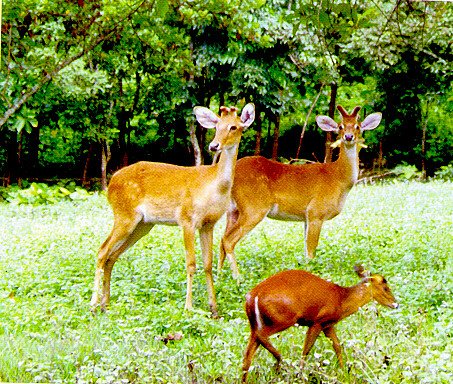

Shree Shree Govindajee Temple, a Vaishnavite center, has twin domes, a tiled courtyard and a considerable congregation hall. The temple houses various idols of Hindu Gods and Goddesses viz. Krishna, Balaram, Jagannath, Subhadra etc. Legend has it that Shree Govindjee himself ordered the installation of his idol carved out from a jackfruit tree at Kaina. Shri Jai Singh Maharaja, the saintly King followed the orders and had an idol carved out from the tree trunk for installation at the temple. The atmosphere at the temple is festive and is rare sight in this part of the country to listen to some authentic Hindu mantras and musical offerings.


The Manipur Zoological Garden specializes in preservation and breeding of some rare and protected species of Manipur. The Lissome and charming brow-antlered Thiamin deer, Sangai is one such rare species (not only in India but the entire world) which can be seen lazing away in its sylvan surroundings. The garden is surrounded by a few pine-growing hillocks and the entire location is awash with the greenery and peaceful atmosphere only disturbed by the delightful shrieks by the visiting children and occasional calls by the animals.


Loukoi Pat lake is a tiny lake and retreat for visitors from within and outside the state. Boating facilities and the scenic beauty of the place is able to mesmerize the visitors.
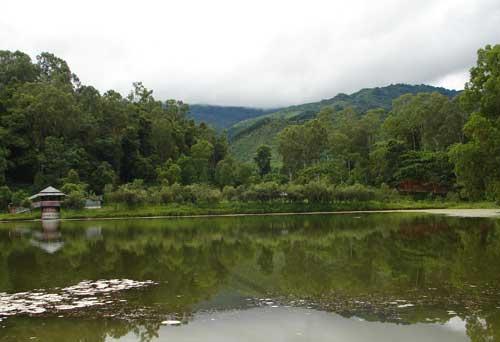
Khonghampat Orchidarium, popularly called as Orchid House, comprises of nearly 200 different types of orchid and covers an area of 215 acres. The orchids have been gathered from all over the country and some of them include the Cymbidium Orchids, Cattleya, Dendrobium and Vanda Orchids.One of the unique qualities of the Khonghampat Orchidarium is that some of the orchids grown here are synonymous to creatures like lizards, moths and bees. Phalaenopsis Orchids are grown in colours like pink and yellow.


The Chorus Repertory Theater was established by a renowned theatrical artist, Ratan Thiyam in 1976. Situated in the outskirts of the city, the Chorus Repertory Theater constitutes of a 2 acre campus, which has been remodeled repeatedly over the past years due to disastrous monsoons. At present, the Chorus Repertory Theater is a center for modern art and theater. A famous performance called Chakravyuha, has been performed more than 100 times and has put this theater on the world map. The Chorus Repertory Theater recently participated in the BeSeTo International Theater Festival, hosted by Japan in 2001. The theater also provides a platform to many aspiring artists and performers along with opportunities to many craftsmen to showcase their work.
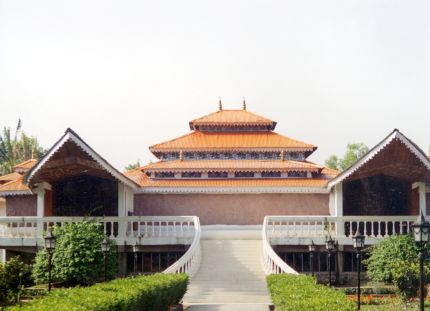

Loktak Lake is considered as one of the largest freshwater lakes of north-east India. This lake is also called the Floating Lake because of various heterogeneous bodies of vegetation, soil and organic matters, which can be found floating in different states of decomposition. The presence of such organic matter is also known as Phumdis, occupying about two third area of the lake. Loktak Lake is mostly surrounded with shallow waters, which lead on to marsh or swamp lands. The water from this lake also serves as a source for irrigation, hydro power generation and drinking water.

Khwairamband Bazaar is also known by many other names like Mother's Market, Nupi Keithel and Ima Bazaar. There are around 3,000 shops which are owned and run by Manipuri women. These shops sell everything from products like handwoven shawls and skirts to fish, lotus, oranges and orange flavoured honey. This market is separated by Khwairamband Road, one side of which sells commodities like hand loom shawls, phaneks, khudeis and bedsheets. On the other side, vegetables, fish, household utensils and fruits are sold. The women shopkeepers are mostly ‘Imas’, which means mothers and tribal women wearing colorful and traditional Manipuri attires. There are various shops which sell beautiful cane baskets and furniture.

The Leimapokpam Keirungba Temple was built in 1875 and is located in the vicinity of Manipur State Road Transport Corporation. This temple is no longer in use, however, it is still considered as a significant monument of Manipur. The entire temple structure is made up of bricks and is square cube in shape.
Matai Garden, also known as Ibudhou Asheiningthou Garden, is located at Matai in Imphal.The name Ibudhou Asheiningthou Garden is inspired by the name of the local god in Matai. The speciality of this garden is the well shaped and beautiful plant, Duranta.
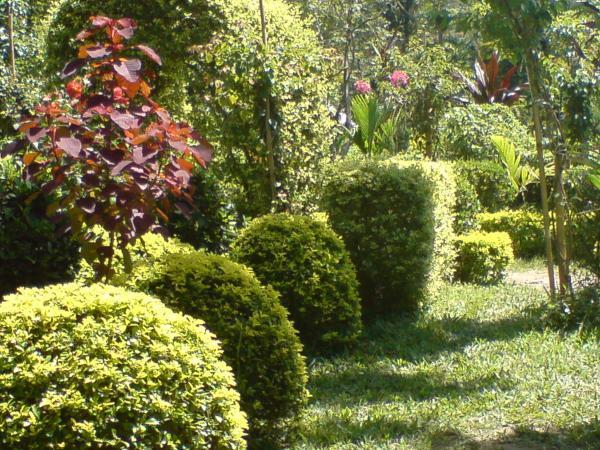
Kaina is a small hill rock, with a height of 914 m, situated at Yairipok Road and is considered as a holy place by Hindus. It is popularly believed that it is at this place that King Bhagya Chandra made the statue of Lord Govinda from a jackfruit tree.This region was inhabited by a considerable population of Hindus. However, after the invasion of Christians, this territory saw a transformation. There are various activities for which this ancient hill is famous, such as a regular ceremonial dance or Ras Garba dance.

Thalon Caves are located at an altitude of 900 metres above the sea level at a distance of 4 km from Thalon village in Tamenglong District. Discovered by Budhachandra, Maharaja of Manipur in 1946, the caves are one of the main historic sites of Manipur and provide the first concrete evidence of the 2000-year old Hoabinhian Culture in India which is also found in other South East Asian countries. There are several caves situated here which are interconnected with each other.
